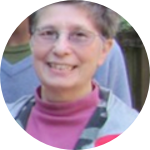About This Project
You don't need to grow algae in the desert southwest for biofuel! We want to move our algae from the laboratory to large outdoor tanks at a fraction of the energy and cost of an equivalent setup in Arizona and New Mexico. Our soft-bodied freshwater algae naturally have an oil content as high as 50% of its dry weight, thrive in the cool Pacific northwest temperatures and help bioremediate wastewater. We need your help to make it happen!Ask the Scientists
Join The DiscussionWhat is the context of this research?
In this era of high productivity, the demand for products has led to rapid industrialization & harvesting of natural resources. Burning petroleum releases carbon dioxide and carbon monoxide, contributing to air pollution, acid rain & climate change. Without an efficient way to halt these detrimental effects, our way of life will prove unsustainable.
Algae are photosynthetic organisms that use the sun’s energy & dissolved organic carbon from the environment to create complex molecules for energy storage, thus sequestering carbon released by burning & producing 50% of the oxygen we breathe.
We use algae that store energy as oils making up to 50% of its dry weight, grown in locally-sourced wastewater, to produce algae oil for biodiesel & co-products and release cleaner effluent.
What is the significance of this project?
This work emphasizes the importance of studying how we can integrate biological, organic, sustainable systems to create local renewable energy sources and other products.
Most of the current biofuel strains are selected to grow in high temperatures to take advantage of non-arable land in the desert southwest. There are few algae that can tolerate desert heat. Energy is used to keep algae warm at night, mix them and to extract the oil, because of a hard covering around each cell.
Many algae thrive at room temperature or cooler and at much lower light levels. Our algae are naturally oily, naked cells that grow well at Seattle temperatures and light levels. There is no need for mixing & cracking cells open, and growth media costs are minimized by using nutrient-rich wastewater.
What are the goals of the project?
By growing algae in the laboratory and outdoor culture tanks using wastewater from King County's West Point Treatment Plant and defined growth media, we will be able to determine the commercial viability of this organism to sustainably produce algae oil and bioremediate waste.
We will study these factors that affect biomass and oil production:
- biological (cell growth & physiology) constraints
- technical (recovery & extraction methodologies) constraints
- abiotic (temperature, nutrient load, photoperiod) factors
- biotic (bacterial eco-cohorts) factors
We will measure cell concentration, lipid type & production, and contribution by bacteria to positive lipid/biomass production for low and highly bacterized cultures in various sized laboratory and outdoor tanks up to 300 gallons.
Budget
In the SW United States, algae growers spend money on nutrients, mixing, heating and extracting lipids from algae with hard cell coverings. Our soft-bodied alga is neutrally buoyant and thrives in wastewater, cooler temperatures and lower light levels. There is no need for mixing, heating and cracking cells open. Why spend so much money to make biofuel in the SW and transport it to Washington when we can make it ourselves. Please consider donating and spread the word about our work. Thanks!
All monies raised will go toward purchasing supplies, maintaining equipment and analyzing samples necessary to study the growth, oil production and bioremediation ability of our algae as we move them from the laboratory to outdoor tanks. These studies will start during the summer months of 2014.
We use a flow cytometer to monitor both cell culture growth and total oil amount per cell on a real-time basis by staining the algae with a fluorescent lipophilic dye. The gas chromatography and mass spectrometry (GC/MS) fatty acid analysis method developed in our laboratory is used to determine individual fatty acid composition per cell. We are charged for time spent using GC/MS equipment in the UW Chemistry Department. PCR & sequencing analysis are necessary to identify bacterial strains present in the algal culture and to confirm that the algal strain remains the same over time.
Large outdoor tanks and space are being graciously lent to us by the UW Botany Greenhouse. Treated wastewater is provided by the King County Wastewater Treatment Division's West Point Treatment Plant in Seattle, WA.
Meet the Team
Team Bio
Dr. Rose Ann Cattolico received her doctorate at the State University of New York, Stony Brook, in 1973 and served as a postdoctoral fellow at McGill University until 1975 when she joined the faculty of the University of Washington. She currently teaches classes in cell biology and algology. Her current research projects involve algal sourcing for fuel and high-value co-products, as well as harmful algal blooms.Chloe Deodato is a research scientist and laboratory manager in the Cattolico Laboratory. She received her B.S. in Zoology from the University of Washington in 1998 and contributed to the Human Genome Project at the UW Genome Center. She studies gene expression, coordinates algae biofuel projects and salsa dances.
Warren Carter and Eriberto Lopez graduated from Gonzaga University and work on scaling up the growth of our algae in wastewater. They use protein extraction & quantitation, immunolocalization, microbiological and molecular techniques while working with our algae.
Press and Media
July 6, 2014: Featured in a selection of algae biofuel articles on Twitter. Check it out here!Additional Information
The banner photo is our algae with bacterial cohorts. Notice the two large oil storage organelles in each cell that look like eyeballs. They make up almost half of each cell.Here are cells stained with a fluorescent lipid dye. The lipids are green. At the end of the night (left side) there are very few lipids. At the end of the day (right side) the two lipid bodies are full.

This is a scanning electron micrograph of our alga. There are no scales or hard covering around the cell, so it is easily popped to harvest the lipids.

Here are links to the Cattolico Laboratory website and the West Point Treatment Plant.
This is a paper on how we use flow cytometry to count cells in a sample and assess neutral lipids and chlorophyll content per cell.
This is a paper describing the lipid analysis technique developed in our laboratory and our algae growing in human wastewater.
This is a paper proposing our algae as a lipid standard for the algae biofuel industry. One of the figures is below.

The different colors represent different types of lipids found in the alga and the area of the circle represents the total lipid amount in 1 liter of algal culture. Chrysochromulina tobin (in orange square)has a large variety of lipids and produces more oil per liter than most other species of algae tested in this study.
We've grown our algae in a 1200 liter tank in the greenhouse before our extensive physiology and genomics research.

This is Chloe Deodato next to the 300 gallon tanks that we want to try this summer.

Project Backers
- 15Backers
- 12%Funded
- $700Total Donations
- $46.67Average Donation


